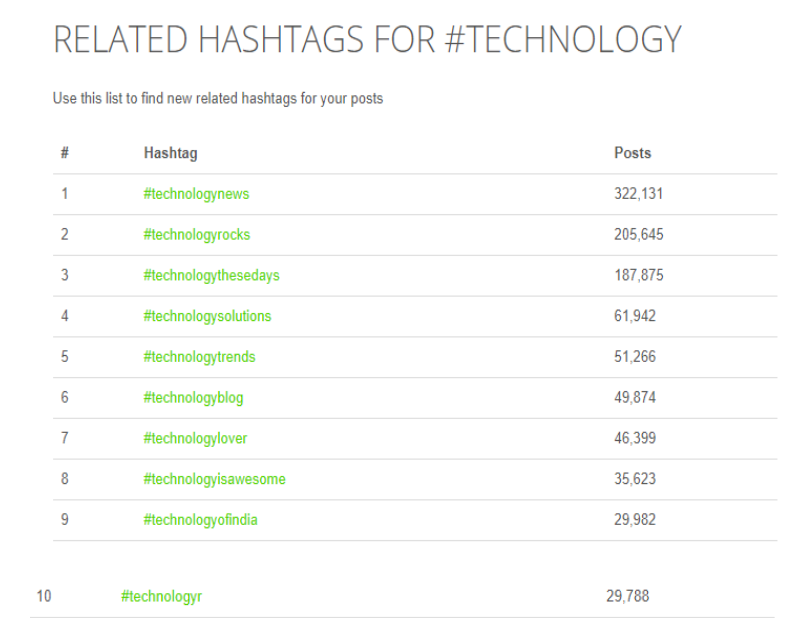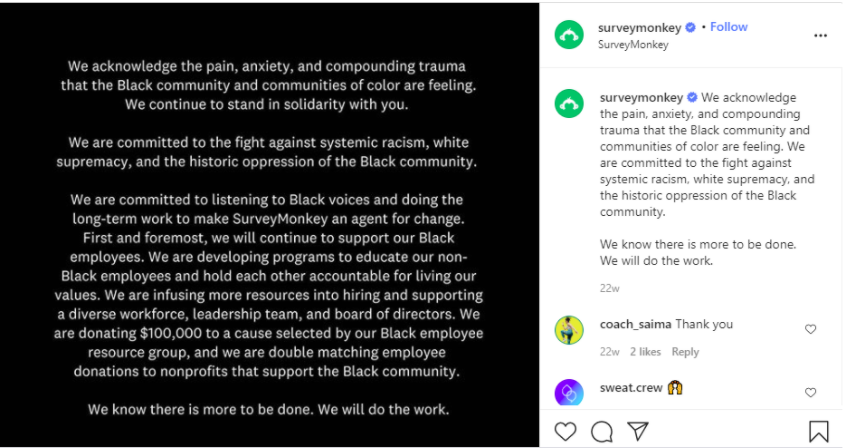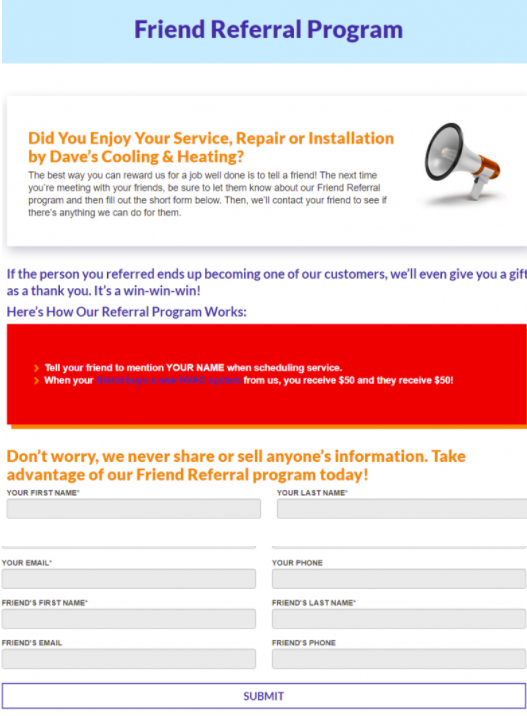15 Marketing Tactics to Help You Skyrocket Your Startup

What’s the number one goal for a startup? To be the underdog that transitioned to a thought leader in its industry, right? However, most startups struggle with 11 out of 12 of them failing. One of the reasons for failure is a limited budget, particularly for bootstrapping startups. Oftentimes, the reason for failure is that they don’t use marketing tactics for startups, but generic ones.
Most marketing experts swear by tactics like Facebook ads, social media, and Google Ads, yet they fail to realize that startup founders often fly solo or in very small teams. So they have neither the budget nor the bandwidth to fight big companies that use the same tactics.
Here’s a wild idea: what if you applied the same innovative spirit to your marketing as you do for your core business? Who says you can’t be an innovator in more than one respect?
Are you onboard? If so, let’s take a look at marketing tactics for startups that actually have a chance for success without breaking the bank.
By the way, did you know that we help startups just like yours come up with the right strategy to make it BIG? Check out our strategy services — designed specifically for startups.
15 Marketing Tactics for Startups You Can Start Implementing Today
1. Ditch Direct Sales for a Sales Funnel
Traditionally, companies would just set up an ad online and expect people to buy. But direct sales no longer work with today’s customers.
Sales funnel entails understanding three core stages in the buyer’s journey.
- Awareness
- Consideration
- Decision
The awareness stage consists of potential customers who are aware that they have a problem or need that should be solved. However, these customers are not yet connected to your brand.
Moreover, they may not understand how your brand helps them solve their problem. There’s a 90% chance that the customer in the awareness stage is not ready to buy from you because, at this point in their journey, you are a stranger.
So what do you do? You get them to leave behind their contact information by developing a killer landing page. Landing pages are developed with one goal in mind, getting leads to take action.
Your audience transitions into the consideration phase once they leave their details on the landing page form. This is the place where you can convert your leads into prospects. You can add them to your mailing list and keep nurturing them until they become your clients. Or, you can try to sell them at this early stage.
It’s your game to run and the only way to know which option is best is to test, test, and then test some more.

Image source: HubSpot
2. Leverage Social Listening Tools
Everyone’s on social media, right? Right! But very few companies actually use it like pros. Social media becomes a goldmine after you look past the usual “post cool stuff and engage with your followers every once in a while.”
Meet social listening aka the best budget-friendly marketing tactic for startups.
Social listening means tracking conversations around specific events, words, or phrases to identify what interests your target audience. This tactic will help you stand out from your competitors as it gives you the right content ideas.
Moreover, when you start listening, you will be able to define your audience and discover where on the internet are people discussing your product and what they are saying about it.
Use social listening tools to get an extensive account of what people are saying about your brand online. A sentiment analysis feature comes with most social listening tools. This helps you discover whether people like what you’re selling or not.
Be creative about it: social listening can help with more than marketing. You can use it for product development — it’s a virtually free way to run extensive research and focus groups.
Moreover, social media listening tools help you engage in conversations in real-time, which makes them a great way to raise brand awareness and generate qualified leads.
3. Discounts are Great but Timing Is the Issue
The rise in online shopping has made the use of discounts one of the best strategies to outdo your competitors. Online sales are forecasted to reach $4.5 trillion by 2021. Both B2B and B2C enterprises are taking advantage of discounts to lure their online audience.
How can you survive in such intense competition?
One way for you to do this is by timing the holidays. Offer discounts on Christmas, Valentine’s Day, Black Friday, Easter, or New Year. Alternatively, target the weird holidays like the Have Fun at Work holiday (January 28th) or the Oysters Rockefeller day (January 10th).
Most successful marketing tactics for startups involve originality, so don’t jump the same bandwagon everyone does.
People are used to getting discounts around popular holidays like Christmas or Easter. Although you can still use the popular holidays, weird holidays can also help boost your marketing efforts. For instance, if you are a tech startup, you can use the National Appreciation Day to celebrate your customers by giving them discounts.
Alternatively, you can personalize the discounts by offering them to your clients on their birthdays. Yes, make them feel like VIPs!
4. Google Ads Work Like A Charm…but Not for Everyone
Did you know that startups spend 50% of their investments on Google and Facebook ads? Companies across every industry use Facebook and Google ads to sell.
But does this mean you should too?
Remember what I said above about every marketing guru recommending Google Ads to make sales? They do work across industries but they don’t work for every company, especially when it comes to startups.
Google Ads are most effective when you’re already an established brand and you just need to stay top-of-mind or when you offer huge discounts. Does any of these sound like you?
If not, look away with no regrets. Instead of Google Ads, why not invest in SEO and keep your organic position for longer. People hate online ads anyway, so you’re better off with an earned position.
See more on this below.
5. Join Forums
If you want people to market your startup for you, then look no further than forums that share your target audience. There are numerous Q&A forums where people seek answers to their problems. Some of the tech forums include Tech Weez, Anand Tech, Tech Support Guy Forums plus so much more.
You can even go for the generic forums and boards: Quora and Reddit are ideal for…well, anything. And, if you’re super serious about the technologies you create and have something interesting to show, try lobste.rs. It’s hard to get an invite, so make the most of it when you do, ok?
Join these forums and provide answers to the questions asked by your target audience. The secret here is to insert backlinks to your site with every answer that you provide.
It’s one of those marketing tactics for startups that very few companies use.
Does it work? Of course!
Is it easy? Of course not!
In fact, it’s quite time-consuming, especially if you do it right and take the time to write exhaustive answers instead of just pasting a link. But the good news is that this marketing tactic for startups will produce results for years to come.
6. Blog Like Your Life Depends on it! (Because it Might!)
Most startup founders are in love with simple websites — one single page if possible. I know why they do it — who doesn’t love simplicity? Well, Google doesn’t, but that’s another story for another day.
You can have a simple, one-page website and a blog attached to it. And you should! Blogging is the best way to build your authority, get organic rankings, and establish yourself as a thought leader.
Don’t believe me? Allow me to demonstrate:
- This Copywritech client generates and converts leads like mad through blogging.
- For this client, we’ve created blog posts that helped them rank for ALL the keywords they wanted to. Of course, the leads weren’t far behind!
- And yes, it works even for high-value leads (think multiple 6 figures), as our story with this client proves.
Want to join their ranks? Get in touch and let’s talk about content and copy that can put your startup on the map!
7. Social Media Influencers
Influencer marketing is forecasted to grow from $5.5 billion in 2019 to $22.3 billion by 2024. It’s one of the most ignored marketing tactics for startups and it’s a shame!
Pitch to influencers related to your niche. For example, if you are in the tech niche/electronics, you can send an email to Marques Browlee. Marques is one of the top-ranking social media influencers in the niche with at least 4.32 million followers on Twitter. If you can get him to endorse your product, then you will have successfully reached over 4 million potential customers.
Micro-influencers also offer significant benefits for a startup. For starters, they are easier to pitch to and convince. Secondly, they are more willing to endorse a product for nonmonetary benefits, e.g. being associated with a brand that sells quality products, or for freebies.
Micro-influencers tend to have a 90% engagement rate. Although their audience reach is small (5,000 to 10,000), they have 22.2 times more actual conversions weekly. Micro-influencers offer a strong foundation for market penetration and reputation building.
8. If you love it, wear it
Branded clothing, e.g. t-shirts, caps, or hoodies, is a marketing tactic that you can use to increase your brand awareness. You can use this strategy to inspire loyalty in your customers and turn them into fans who market your brand.
When customers spot you wearing a t-shirt with your brand name, it will communicate enthusiasm, and some of them may be curious to learn more about your brand by checking out your website.
It gets better: think about it for a second — who’s going to see you wear it? The people around your home and your office, right? That’s exactly who’s most likely to buy from you.
(See? We’re bombarded with complicated strategies and forget that sometimes the simplest marketing tactics for startups are the most effective.)
People are more prone to buying from local businesses because everyone wants to support their own community. But odds are they didn’t even know you were neighbors, even though they most likely passed you or your office dozens of times. Help them help a neighbor out!
9. Join Forces! Co-Branding Can Be Very Powerful
Co-branding is an effective strategy for a startup as it helps you leverage the reputation of another brand to market your own. The secret to leveraging this strategy however is finding a win-win situation for you and the targeted brand.
A classic example of this is Apple and Mastercard. When Apple launched Apple Pay App back in 2014, they had to partner with credit card companies for the app to be relevant.

Source: Mastercard
The app helps users store their credit or debit card data on their phone so that they can use it without having their physical card. Mastercard was the first to agree to integrate this technology for their customers. This co-branding was a win-win for both, as credit card companies face the pressure of adapting to the latest consumer purchasing tools.
10. Use Social Directories
As a startup you want your audience to discover your products ASAP. Well, social directories with high domain authority are an ideal way for you to get that done. These sites have millions of users and can be super effective — 88% of customers trust online reviews just as much as personal recommendations.
Social proof will help you generate traffic to your website and boost your rankings in search engines. Look for one that’s relevant to your niche. For instance, if you are a tech company, then KillerStartups is suitable for you. SaaS company? G2 is the place to be!
Identify and make a list of social directories that you would like to target based on your niche. Go ahead and register on those sites as registration is free. Also, ensure you create a strong profile and powerful images for your brand.
11. All Hail the Hashtag
Hashtags are a great marketing tactic for startups as they can create hype around your new product or service. This tactic helps you increase social media engagement and grow your online presence by attracting new customers. You can create a catchy hashtag on Google+, Twitter, Facebook, Instagram, or Pinterest.
Creating a hashtag for your business is easy. You have to find an acronym, phrase, or any word that is relatable to your audience; local businesses, for instance, tend to opt for a hashtag with a phrase like #shoplocal or #shopsnearyou. Such hashtags help filter your social media post making it linkable and likable. Some of the most popular hashtags used with startups are #hustle or #entrepreneurialmindset. You can use one of these popular hashtags to generate traffic to your post.
Moreover, you can make it catchy by adding your business name to the phrase, e.g., #hustlekidstablets. You can also create a hashtag with a call-to-action phrase; for example, you can use the phrases ‘Install now,’ or ‘Get started today.’ You can use hashtags when you are promoting a new product or service or offering discounts.
Similarly, a trending hashtag will help you gain visibility as the content is seen by more than just your followers. You create a trending hashtag by using simple and relevant terms. The secret is to use phrases that your audience can relate to.

Image source: Best Hashtags.com
12. Promote a Social Cause
Supporting a social cause is a growth hack that will help your startup quickly gain traction. Nearly two-thirds (63%) of global consumers prefer to purchase from companies that stand for a social cause. However, this should be a social cause that reflects your company’s values and beliefs.
A good example of this is the Yoplait franchise that sells yogurt. The brand took the social issue of mum-shaming that had to do with patronizing information given to mothers on how to parent better. Yoplait launched a marketing campaign dubbed ‘mom on.’ The campaign depicted how mothers struggle with overcoming the criticisms they face, including going back to work or breastfeeding.
The ad communicated Yoplait’s stance in supporting mothers. Moreover, it was quite memorable and got the brand to stand out from its competitors.
Similarly, in honor of the #pulluporshutup movement that advocated for economic opportunities for Black people, Surveymonkey set up an Instagram ad about their intention to fight systemic racism.

Image source: Surveymonkey Instagram
How do you promote a social cause?
Look for a social problem or issue that will help you make a difference in the community. This should be an issue that reflects your brand’s values and will help you connect with your audience.
Approach the social cause from a business standpoint. This means asking yourself how certain charities or organizations can boost your exposure while conveying the right message to your targeted audience.
13. Tradeshows Are Where the Networking Magic Happens
Tradeshows offer you a chance to connect with the influencers in your niche. Most tradeshows have a huge attendance, for instance, the Web2Day trade show gets over 10,000 attendees from different countries. Similarly, conferences like the Ruby Community and Rails Conference allow developers to engage and connect. These events are a great place to network and promote your product or service.
A good example of a tech company that used this marketing tactic is Sidekiq. The owner, Mike Perham, made use of the relationships he had built with programmers in the conferences to promote his product.
So look out for trade shows and see them as an opportunity to market your startup offline. Most trade shows live online now? It’s even easier to sign up for and attend more than before!
14. Set up a Referral Program
Referral marketing is a strategy that allows you to offer incentives to your customers to motivate them to bring in more customers. Some critics call it bribing your customers. Whether it’s bribing or convincing, this strategy has helped startups such as Dropbox become industry giants.
Some platforms can help you set up a referral program. However, this strategy’s success lies with you having a strong product or service that customers would love to recommend to others.
Some reward program ideas include offering an upgrade to your clients should they bring in more customers. Alternatively, you can offer discounted products or services after successful referrals from your customers.
The referral program is a unique strategy that most small businesses do not use. But there is a reason why business giants such as Uber and Airbnb have leveraged this marketing tactic for startups. Use your position as a startup to your advantage by building personality around your referral program. You can also incorporate ‘feel good ‘messages like: “Share with friends and get a 20% discount.”
A good example of a referral program comes from Dave’s Cooling & Heating. What made this program powerful is that it aimed at building a community with their customers. The message also communicated a win-win for both the brand and the customers. Plus, it’s super catchy: “The best way you can reward us is to tell a friend.”
Alternatively, the customer gets $50 when the friend becomes the company’s customer. Dave’s referral program is enticing and easy-to-understand. Be like Dave! Don’t come up with super complicated, multi-tiered referral programs. Keep it simple, easy to understand, and honest.

Source: RaveforDave
15. Up Your Content Game
Every startup needs a strong content marketing strategy to help them connect with their audience and stand out from the competition. Content remains king and one of the best-bang-for-your-buck marketing tactics for startups. Yet, only 37% of B2B businesses and 39% of B2C businesses have a sophisticated content marketing strategy.
Where are the rest?
Most founders and marketers are misinformed about the purpose and benefit of content. For starters, they see content marketing as a process for creating different forms of content for marketing. Tech startups are also not investing much in content as they struggle to understand how they can turn the technobabble into a powerful message that would convince their audience.
Content marketing is way more than that, and when done right, it can lead to stellar results such as high ROI, high customer retention, and positive brand positioning.
With 10x content, your startup will get more traffic, lead generation on steroids, and great conversion rates. Why bother with content and SEO? Because 75% of people never go past the first Google search page. Furthermore, there are over one trillion searches each month online. See the connection here?
Of course you do!
That’s why you need a powerful content strategy!
Want one? Check out our in-depth guide on content marketing for startups.
Marketing Tactics for Startups — Conclusion
These 15 marketing tactics for startups are budget-friendly, some even free! Got any reason not to stand out from the crowd?
Not sure where to start? We can help! Reach out to us for a strategy call!
1 Comentariu la “15 Marketing Tactics to Help You Skyrocket Your Startup”
[…] Need more inspiration? Check out some additional low-budget, high-impact marketing tactics for startups. […]